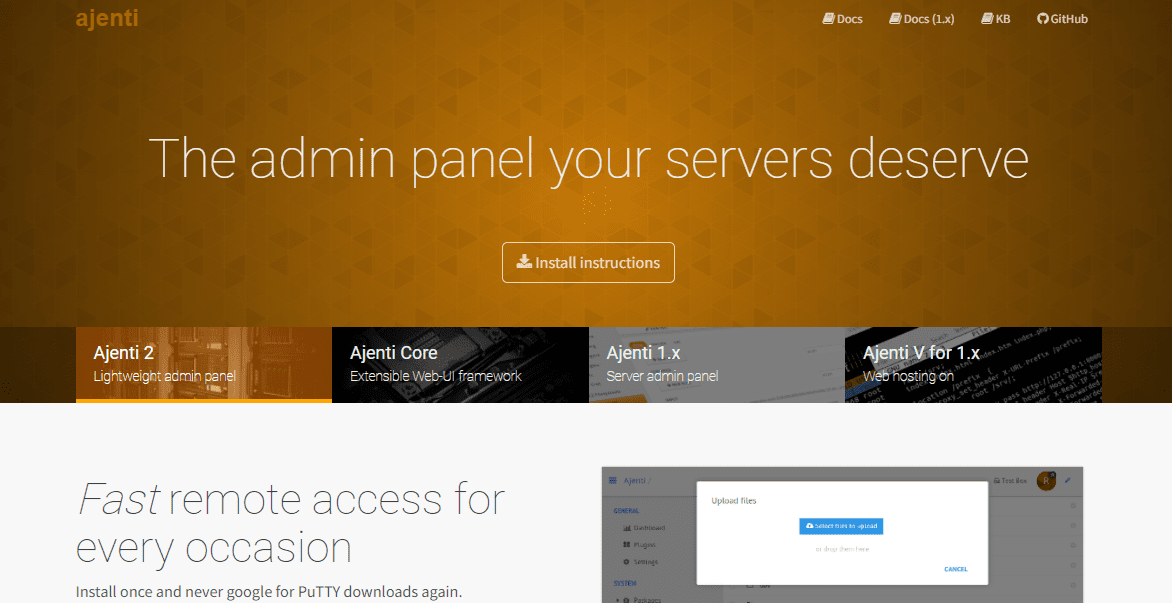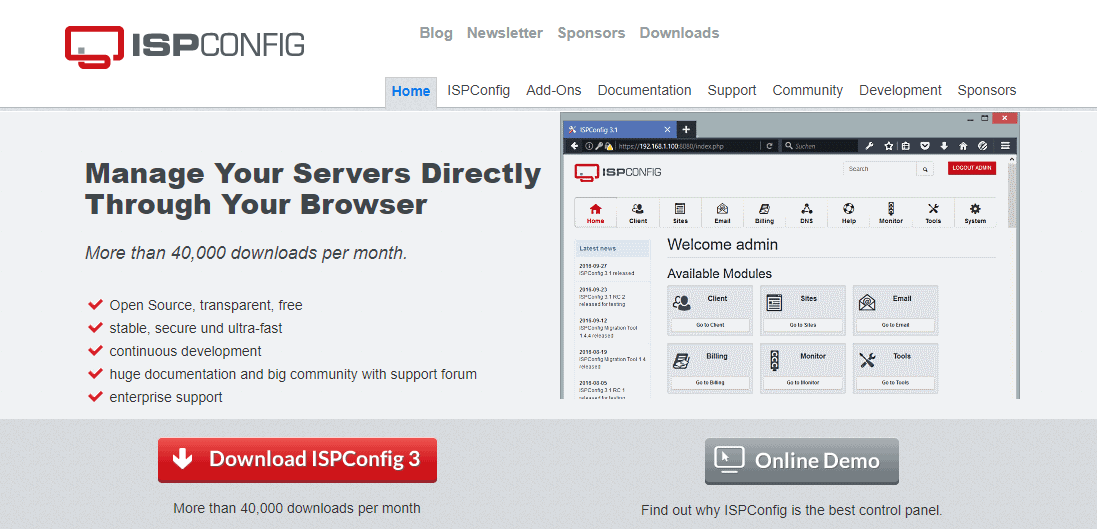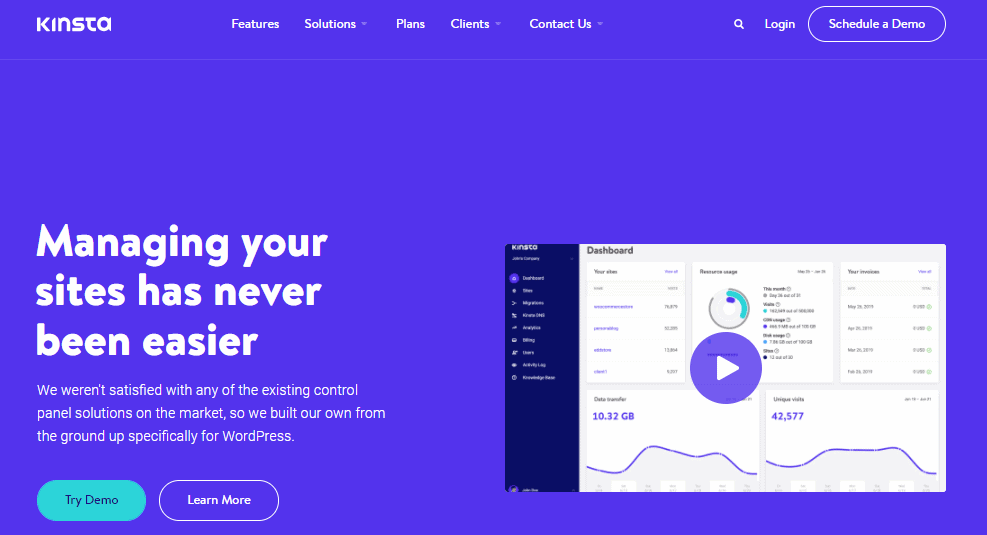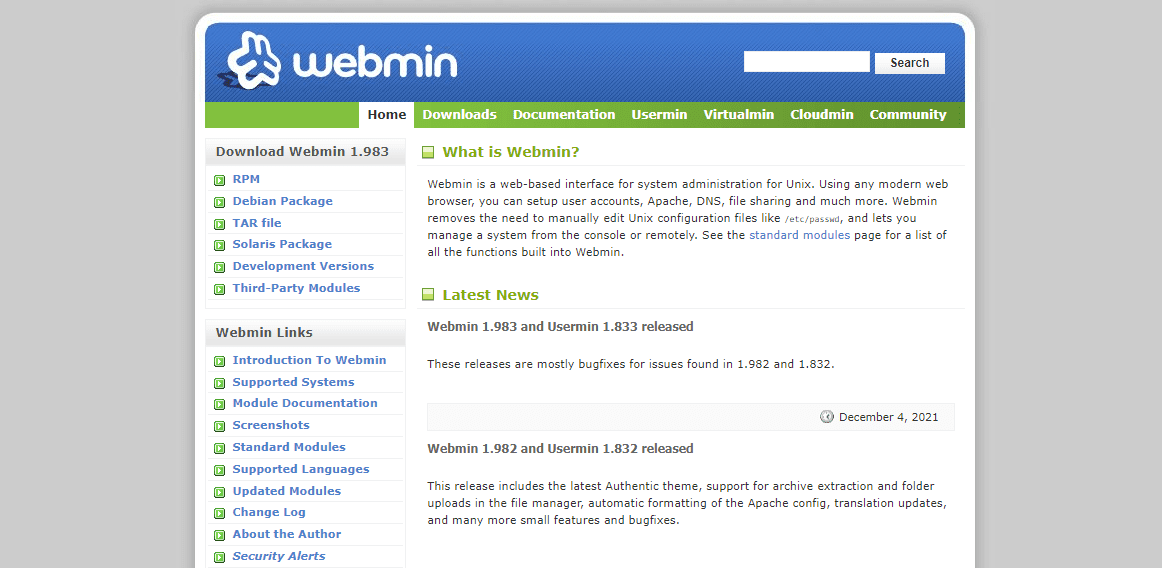A big part of every site is hosting. It’s what keeps a site up and running. Since there is more content online than ever before, the hosting market has also grown exponentially in the last couple of years. Following the expansion of the growing need for hosting, the market has evolved and significantly simplified the UI, functions, and features that are done in the background.
While cPanel certainly is one of the most popular solutions, it’s by no means the only one that’s available. We took a deep dive into the world of hosting management and came back with a few solutions that are more than interesting.
But, before diving into hosting management, you need to have a great host, right? One thing that sets WPMU DEV’s hosting platform apart is that as well as having all the hosting features you’d expect – it also comes built-in with 7 pro WP plugins – covering performance, security, backups, and more. Get 20% off any of their plans here.
Without further ado, let’s start at the beginning.
What is cPanel
Before going into the various alternatives to cPanel, we feel it’s important to know what cPanel is and how it works. Then we can play off of that by comparing the alternative options to the thing they’re the alternate for in the first place.
To put it simply, cPanel is a tool that simplifies the hosting management process. It’s a Linux-based control panel with a “dashboard-like” user interface making it instantly recognizable to anyone that’s ever worked with platforms like WordPress. The main thing about it is the accessibility – because you don’t need to use any code, there is no need for dedicated programmers and/or technicians (if you don’t have some already). Options you’re given cover everything you would need, so they can be used for various hosting methods across the board like shared hosting, dedicated hosting, etc.
Reasons why someone would look for an alternative aren’t that many, but they’re still present. Some of the major issues pertain to stability (updates are regular, but there are still crashes which could result in data loss); lack of advanced options (as your site grows, you’ll be hardly able to change much of the crucial predefined settings); error reporting (the reports aren’t as straightforward as you would expect); and lack of optimization (it covers everything but lacks optimization for specific platforms).
Now that you have a decent grasp of the pros and cons of cPanel, it’s time to do the same for the many other options out there. Some are free, and some are premium solutions, but all of them have done something right to get on our list, in no particular order.
cPanel alternatives
Ajenti

If you’ve ever managed sites before, chances are you’ve come in contact with Ajenti before. It’s primarily designed for those on a budget like startups or small businesses, a fact emphasized by the cost – it’s free, and that makes it a rather popular choice.
Reflecting the market Ajenti aimed at doesn’t stop at the price tag but carries on through all the functions as well. The user interface is lightweight and straightforward, slimming down everything to its essentials, so anyone can pick it up and run with it. While it is easy to use, the data you can get back isn’t lightweight at all. Ajenti works for Linux servers running Python on the backend and JavaScript on the frontend. Also on offer is a dashboard full of monitoring and analytical data that will tell you everything you need about how your server and your site are performing. Additionally, you’ll have access to a fully customizable firewall you can adjust to the tiniest detail.
The downside of it being open-source, i.e., free, means there’s a lack of official support teams. Combating this, however, is the excellent community on the official forums and extensive documentation you can access anytime. Because of this, you will need to be ready to do some of the heavy lifting, but luckily the nature of the software makes it easy on you.
Pros: price, ease of use, numerous monitoring and analytics tools
Cons: lack of official support, limited functions for more demanding sites/admins
ISPConfig

If you’re an experienced user and don’t particularly need a user-friendly interface that hides its functions for simplicity’s sake, take a look at ISPConfig. This is another open-source app that takes a slightly different approach to compete with cPanel.
You’ll be able to manage multiple servers from the same dashboard, meaning you can standardize your work much more easily than going through every server separately. Furthermore, you’ll get access to all the nuts and bolts with in-depth Apache webserver configuration options (aimed at experienced users), role distribution, personal email hosting, etc.
Unlike other control panels that focus on one or two specific configurations, ISPConfig can run Debian, Ubuntu, CentOS, Fedora, and OpenSuSE Linux configurations making it one of the most flexible solutions on the market.
Pros: extensive control features, multiple serves on one panel, flexible server configurations
Cons: not designed for newcomers, requires manual installation
MyKinsta

Website builders have been all the rage in the last couple of years. Long gone are the days when only programmers were able to put up and maintain a site. One of the more popular site builders out there is Kinsta. As the whole Kinsta service is presented as an all-included package deal, their own server management app is included with every subscription.
When you have all your resources coming from one place, there are some obvious advantages. Optimization is through the roof – everything from the servers to management to your website platform (in this case WordPress) is run by the same people, meaning there are no overlaps, loose ends, or incompatible functions at all.
Even if you go beyond that, MyKinsta is a very good server control panel on its own. You’ll be able to quickly assign roles that provide different levels of access to users, switch sites (if you have multiple) form online to offline in just a few clicks, add and remove sites from the server in the same, easy way, use robust analytical tools and much more. Additionally, the user interfaces share a theme and overall design across the Kinsta product board, so getting accustomed to using the page editor translates to the server dashboard and vice-versa.
Pros: perfectly optimized, integrates web management and hosting needs into one service
Cons: available only as a full package with the Kinsta service
Webmin

The closest thing to cPanel we’ve found is probably Webmin. Boasting a wealth of control options at your disposal, you’ll be able to monitor your bandwidth and server health, manage user accounts, access/change files, and content databases, and much more. The open-source nature means you’ll have access to all aspects of the control panel, so you’ll be able to make significant custom rules and options, even develop something you could monetize. Unfortunately, this plethora of options comes with a steep learning curve, even for experienced users. The interface is hard to fully grasp, and it will take a while before you’re automatically clicking your way through the dashboard.
Aside from the unfettered access and host of options at your disposal, Webmin also features Virtualmin, a module that lets you manage multiple servers from the same interface. Additionally, unlike cPanel, which you’ll have to pay for or get within your chosen hosting service (which you’re also most likely paying for), Webmin is free, making it that much more available to everyone.
Pros: virtually unlimited access to the source code, multi-server control module
Cons: high learning curve, difficult to use interface
No control panel
This might be considered cheating, but since it’s a totally viable option, we’ve decided to include it anyway – you can opt to forgo a control panel entirely. Naturally, doing so will mean you’ll have to contend with the raw server interface, i.e., code, and as such is an option for only a select few with the required knowledge.
That’s basically the only downside – the required knowledge and time you’ll have to put into managing a server (or servers) in such a way.
The benefits, on the other hand, are plentiful, starting with complete and absolute control over everything from start to finish. Every control panel will have limitations regarding what it lets you do; they’re just built that way – you’re trading access for convenience. Working with code directly bypasses all of that, so everything you’re configuring, monitoring, or assigning is expanded upon their control panel versions.
There’s no need to highlight it, especially since we’ve featured open-source solutions on the list, but forgoing a control panel also means there’s no strain to your budget, and additionally, it’s a skill that, when mastered, could be a source of income outside your site.
Pros: unlimited access to everything
Cons: only for programmers
Summary
There are many reasons why you would want to explore an alternative control panel to cPanel. You might want more control of your server configuration; with cPanel being a commercial solution, more options become available with some other, open-source solutions (or no control panel). Maybe your hosting service doesn’t provide you with cPanel as the default option, and you’re looking for a free solution elsewhere. Perhaps you just aren’t into the mainstream. As we’ve said, your reasons are your own; we’ve tried to offer you solutions, and each on the list is there for a reason, i.e., you won’t go wrong with either of them.